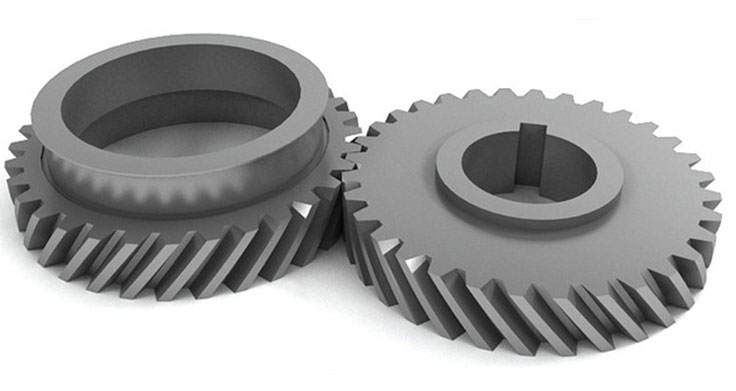Maximizing wind turbine efficiency with helical gear involves leveraging the inherent advantages of helical gear design—such as smooth operation, increased contact area, and reduced noise—while addressing specific challenges related to wind energy applications. Wind turbines require reliable and efficient transmission systems to convert the variable rotational energy captured by the blades into consistent electrical power. Here are key strategies and considerations for enhancing wind turbine efficiency through the use of helical gear:

Optimizing Gear Design
- Helix Angle Selection: Carefully selecting the helix angle can significantly influence the efficiency and load distribution across the helical gear teeth. A higher helix angle provides greater tooth overlap, leading to smoother operation and reduced vibration, which is crucial for minimizing mechanical losses in wind turbines.
- Advanced Tooth Profile Modification: Implementing profile modifications can minimize helical gear misalignment and deformation under load, reducing stress concentrations and enhancing the longevity and efficiency of the helical gear system. Techniques like crowning and tip relief are used to combat the effects of deflection, thermal expansion, and manufacturing variations.
- Material Choice and Treatment: Using high-strength, fatigue-resistant materials such as advanced alloys or composites can improve helical gear durability under fluctuating loads. Surface treatments and coatings (e.g., carburizing, nitriding, or using diamond-like carbon coatings) can further enhance wear resistance and efficiency.
Leveraging Advanced Manufacturing Techniques
- Precision Machining: High precision in helical gear manufacturing ensures optimal meshing, reduces noise, and minimizes losses due to friction and wear. Advanced CNC machining, helical gear grinding, and finishing processes are crucial for achieving the tight tolerances required for maximum efficiency.
- Additive Manufacturing: 3D printing technologies enable the production of complex helical gear geometries that are optimized for performance and weight reduction. This can include innovative designs that are not feasible with traditional manufacturing methods, potentially improving the aerodynamic efficiency and reducing the material use in helical gear production.
Implementing Smart Technologies
- Integrated Sensors and Monitoring: Embedding sensors within the helical gear system can provide real-time data on operational parameters such as temperature, vibration, and load. This information enables predictive maintenance strategies, reducing downtime and ensuring the helical gear system operates at peak efficiency.
- Digital Twin Modeling: Utilizing digital twin technology to create virtual models of the helical gear system allows for simulation and optimization of performance under various wind conditions. This can identify potential improvements in the helical gear design and operational parameters, enhancing overall turbine efficiency.
Considering System-Level Integration
- Gearbox Configuration: The arrangement and ratio of helical gear within the gearbox must be carefully optimized to match the turbine’s rotor speed with the generator’s required input speed. This often involves a multi-stage helical gear system that can efficiently transmit power across a range of wind speeds.
- Lubrication Systems: Developing advanced lubrication systems that can operate effectively in the variable and often harsh conditions faced by wind turbines is essential. The use of synthetic lubricants, along with active management systems that adjust the lubrication based on operating conditions, can reduce friction losses and wear.
- Thermal Management: Effective thermal management systems ensure that the gearbox operates within its optimal temperature range, maintaining efficiency and preventing damage due to overheating. This can include both active cooling systems and thermal insulation techniques.
By addressing these key areas, the efficiency of wind turbines can be maximized, reducing the cost of wind energy and enhancing the competitiveness of wind as a renewable energy source. The continuous innovation in helical gear design, materials science, and smart technology integration plays a vital role in achieving these improvements.
